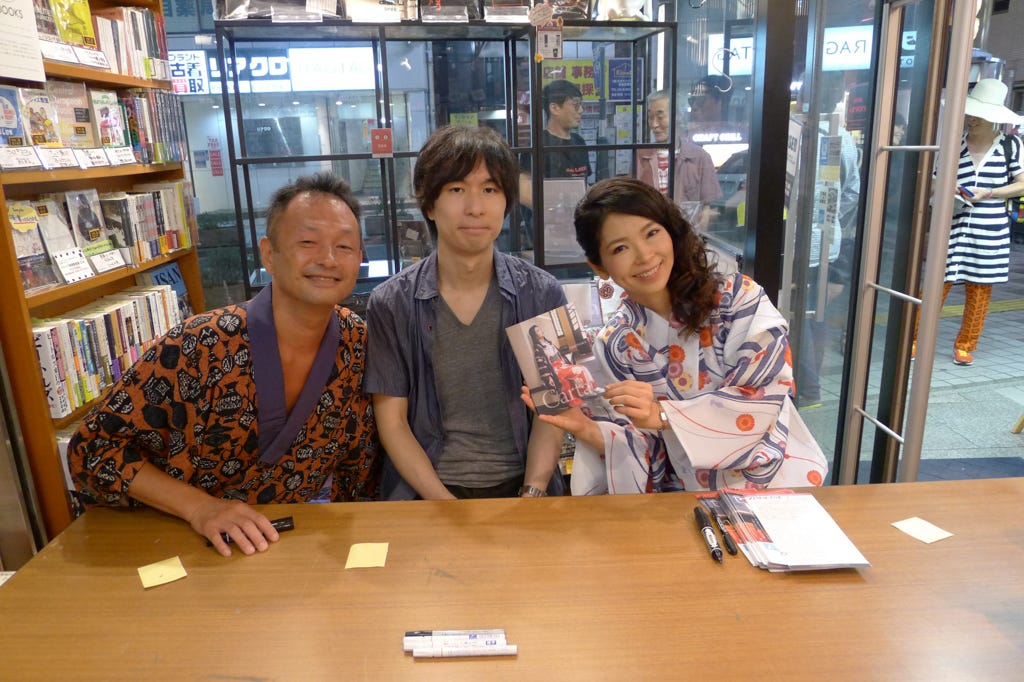What's J Jazz?
What’s J Jazz?
J Jazz, or Japanese Jazz, is a classification label found in sections of some record and CD shops in Japan. These are sections that record stores use to spotlight and organize albums from Japanese jazz musicians. By separating the Japanese artists’ albums from the general jazz section, both local and overseas customers who are visiting Japan can more easily find unfamiliar Japanese jazz albums.
This is especially helpful for travelers with limited time who want to find and obtain these albums quickly. A favorite spot to browse the current J Jazz offerings in Tokyo is Disk Union “Jazz Tokyo” near Ochanomizu station. There are many second-hand offerings there as well, providing a great way to stock up on lower-priced albums.
Of course, this is also great for local Japanese musicians, whose works are made more visible and supported in this spotlight, rather than being scattered among the shelves with the general jazz catalog.
As a side note, the term J Jazz was also used as the original title of this website. Launched in January 2018, this site was titled “J Jazz: Modern Jazz from Japan”, but I changed the name in January 2022 to “Jazz of Japan” for simplicity and clarity. Also note that sometimes the term J Jazz is used for fusion/groovy funk/dance beats with horns/electronics/loops, or club jazz, but that may be limited to a specific subgenre. For general use here, J Jazz stands for any type of jazz and related music from Japan or by Japanese musicians. There’s also an interesting project called J Jazz: Deep Modern Jazz from Japan, which highlights jazz recordings from earlier generations of jazz in Japan—it looks and sounds great.
J Jazz as a Sub-Genre
Another lesser-known, and maybe nonstandard, use of the term J Jazz refers to a specific sub-genre of music with elements of rock, funk, disco, and jazz, usually framed by a club or dance beat and a horn section. This is similar to EDM, dance, or chill-oriented music and is also like the club jazz sub-genre, which itself is very popular with a big audience. But the jazz music that I talk about here is different from the specific club jazz sub-genre.
In these articles, I use the term J Jazz in a broader sense to represent jazz and related music from Japan, created by Japanese musicians, and released on albums produced in Japan (these are general guidelines, not strict rules). In most ways, musically, there isn’t a big difference between the music in the general jazz section and the J Jazz section of the record store. The usual styles of jazz such as bebop, swing, hard bop, fusion, contemporary, free jazz, and the like will be found in both categories.
In this way of thinking, I don’t consider J Jazz to be a distinct sub-genre of jazz, as there are no defining or limiting musical elements or styles that are distinct from other jazz genres. The difference is that the albums or the albums’ musicians are from Japan. In other words, jazz of Japan.
J Jazz and Traditional Japanese Elements
Considering the guidelines above, it follows that the jazz of Japan extends beyond music with elements that were deliberately chosen to highlight Japanese influences.
For example, J Jazz does not have to feature traditional instruments like shakuhachi flutes, taiko drums, or shamisen. Neither are elements exclusively drawn from traditional dramatic forms like Enka, Noh, and Kabuki works of art. Similarly, J Jazz does not only feature lyrics sung in Japanese or music played primarily using Japanese musical scales.
Of course, some J Jazz albums here and there may contain some of these (for example, Seiji Endo: Genji Monogatari Volume 1 and Reikan Kobayashi: Gakudan Hitori), but this is not a necessary requirement.
At the same time, characteristics often used to define a genre including instruments, musical patterns and phrases, rhythm styles, and the like are not used here. Traits found in general jazz music are also present on J Jazz albums, including improvisation, sense of swing, blues influences, dynamic drumming varied beyond four-on-the-floor backbeats, and so on.
Given that there are mostly similarities with general jazz music, is there anything in J Jazz that could be identified as unique? Is there something different about the jazz of Japan, or the sound of jazz created in Japan?
Keep reading with a 7-day free trial
Subscribe to Jazz of Japan to keep reading this post and get 7 days of free access to the full post archives.





